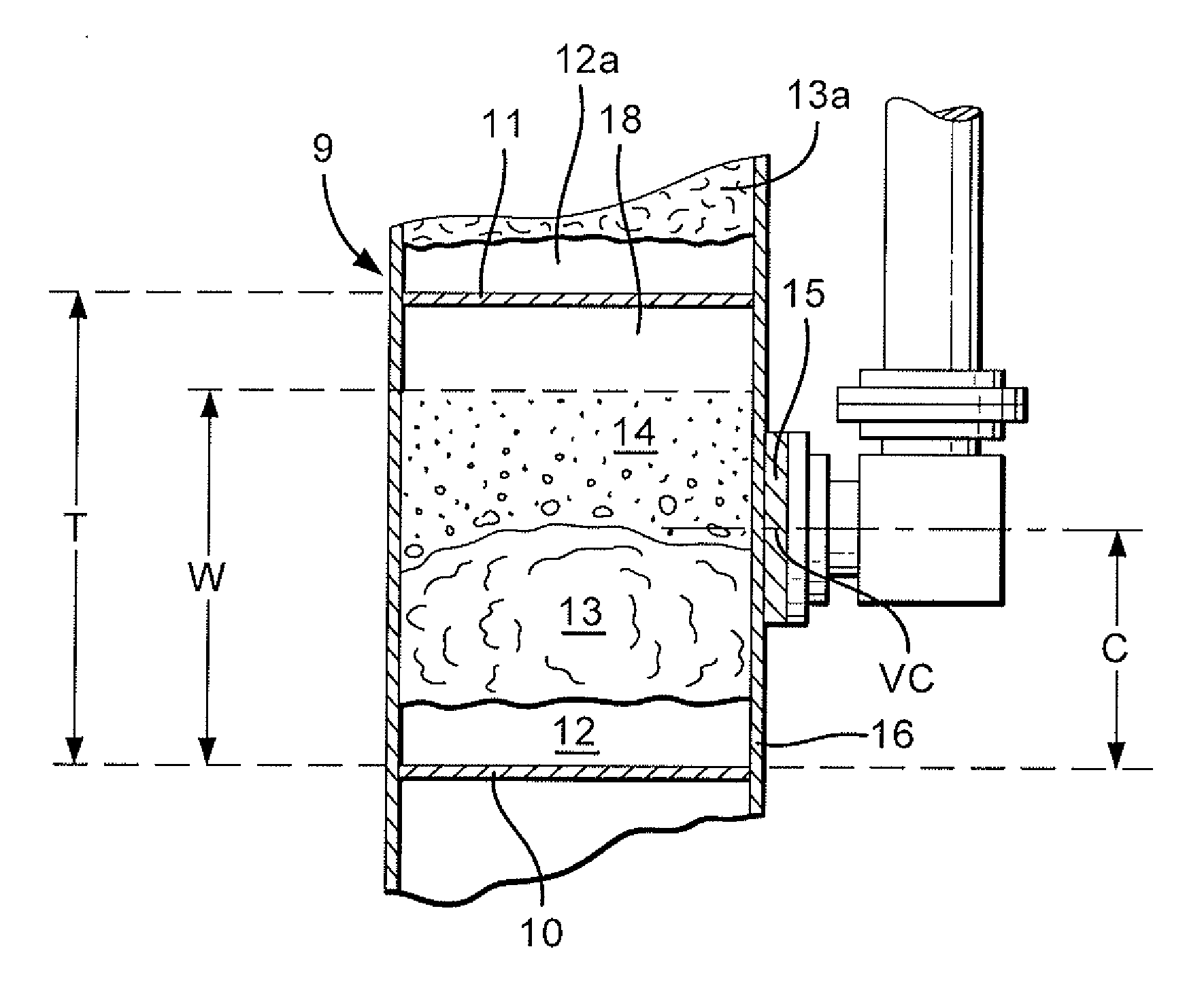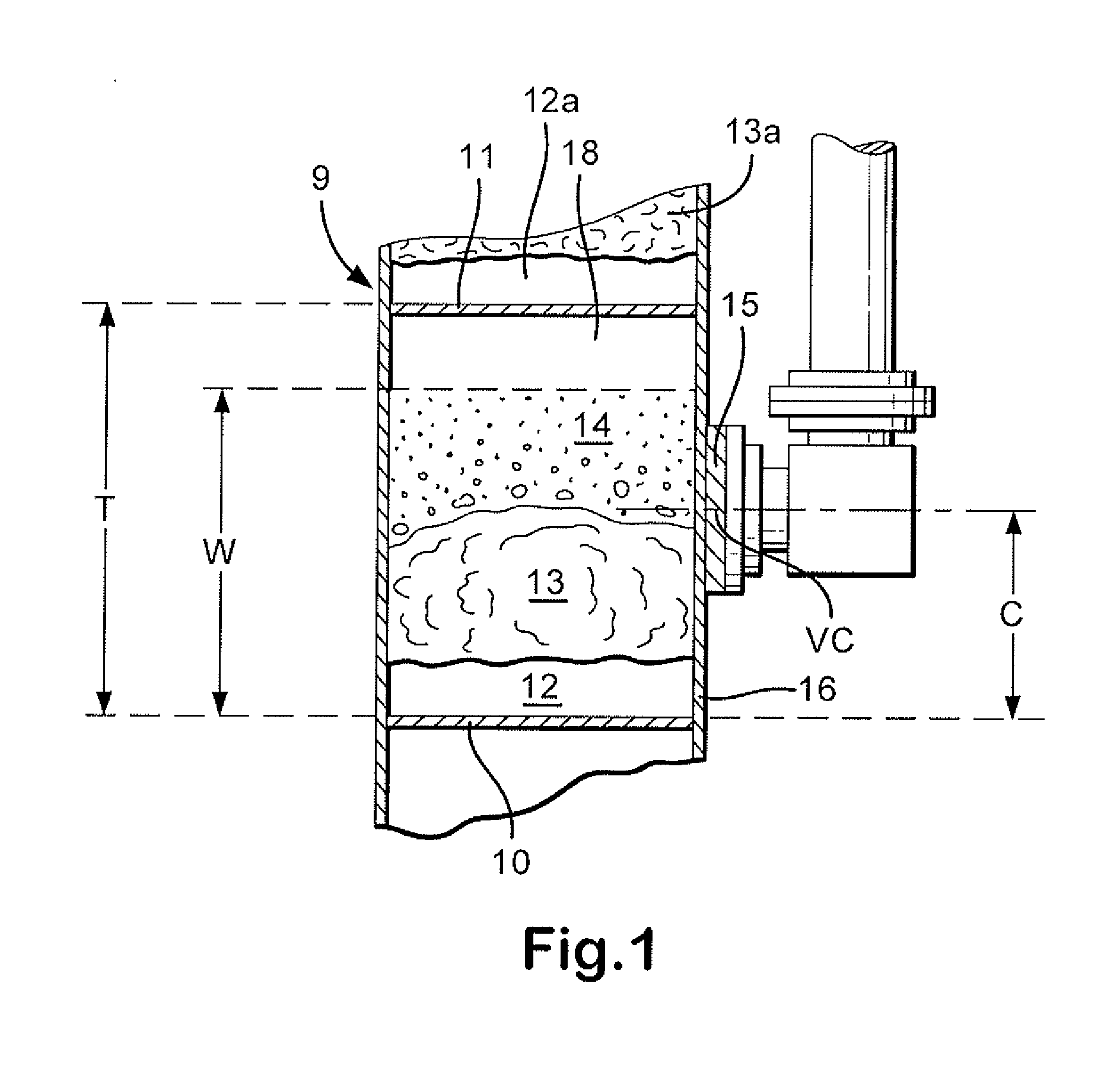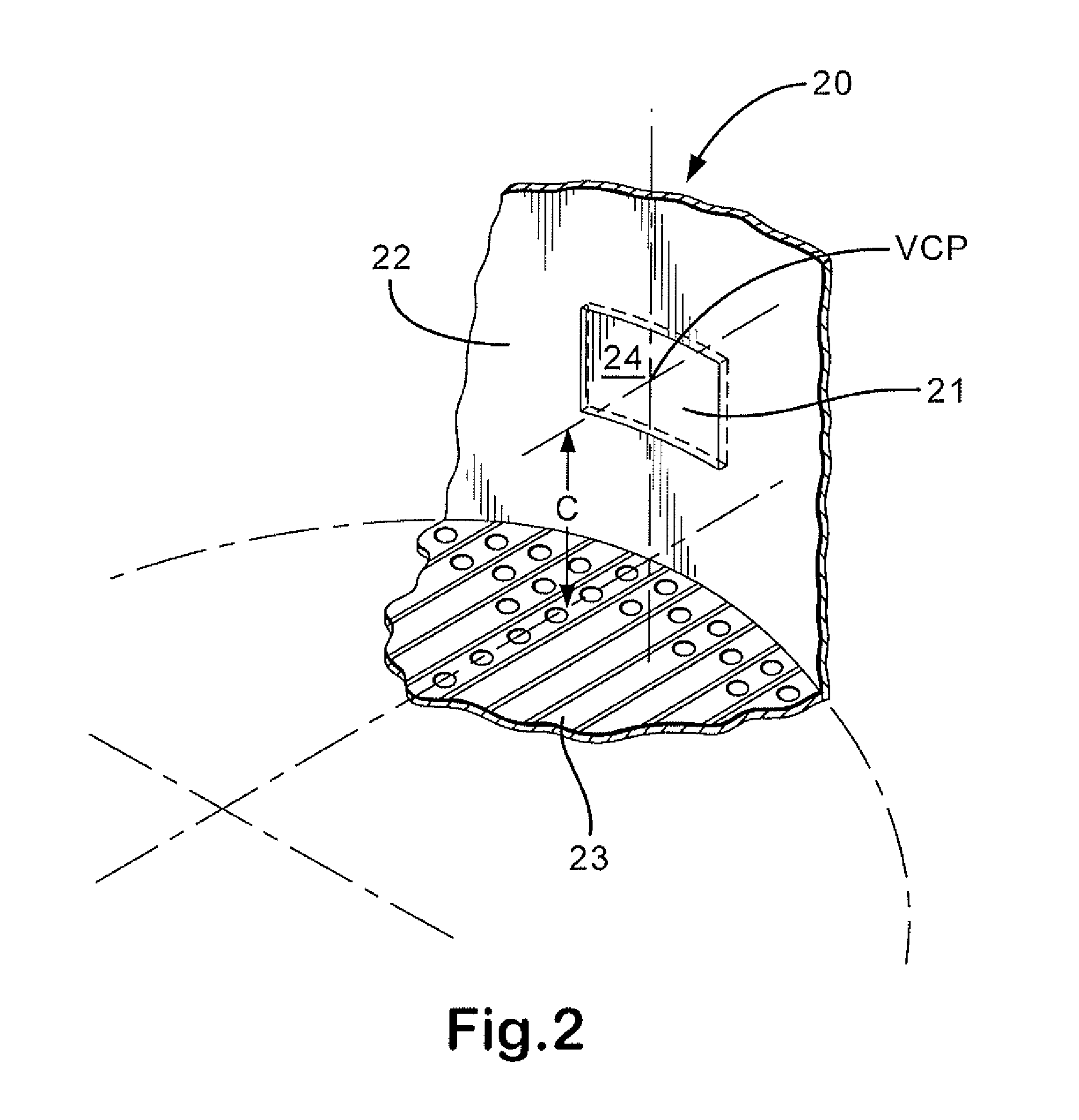Method and apparatus for minimizing accumulation of polymer on process equipment, especially safety devices
a technology of safety devices and process equipment, applied in the direction of distillation, trickle coolers, coke oven details, etc., can solve the problems of affecting the proper functioning of process equipment, affecting the safety of workers, and forming and accumulating polymer. a common and troublesome occurrence, and the effect of reducing the risk of accidental accumulation
- Summary
- Abstract
- Description
- Claims
- Application Information
AI Technical Summary
Benefits of technology
Problems solved by technology
Method used
Image
Examples
example 1
[0071]A pressure relief device was installed, in accordance with the present invention, in a commercial-scale distillation column comparable design to Comparative Example 1 and the column was again used in a process for purification of acrylic acid. As in Comparative Example 1, the pressure relief device was a rupture disc having a nominal burst pressure of 25 psig (1.7 atmospheres) and full-vacuum rating.
[0072]With reference collectively to FIGS. 6 and 7 the safety device assembly 60 having a rupture disk 61 was connected to the column wall 73 of the distillation column 74, in accordance with the method and apparatus of the present invention (see FIG. 7). More particularly, the safety device assembly 60 was positioned relative to the topmost tray 72, in a substantially vertical orientation, and at an elevation within the wetted region (not shown) present above the topmost tray 72. In this position and orientation of the safety device assembly 60, the froth / liquid spray (liquid phas...
example 2
[0083]A pressure relief device was installed, in accordance with the present invention, in a commercial-scale distillation column of comparable design to Comparative Example 2 and the column was again used in a process for purification of acrylic acid. The pressure relief device was a rupture disc having a nominal burst pressure of 15 psig (1 atmosphere) and full-vacuum rating.
[0084]With reference to FIG. 9, the safety device assembly was connected and positioned relative to the distillation column in accordance with the present invention, i.e., in a substantially vertical orientation, and at an elevation within the vertical extent W of the wetted region above the topmost tray of the distillation column, such that the froth / liquid spray (liquid phase fluid) present above the topmost tray intermittently contacted the upstream surface of the rupture disc, thereby preventing accumulation of unwanted polymer and condensate.
[0085]As shown schematically in FIG. 9, the distillation column ...
PUM
| Property | Measurement | Unit |
|---|---|---|
| tray spacing | aaaaa | aaaaa |
| spacing | aaaaa | aaaaa |
| spacing | aaaaa | aaaaa |
Abstract
Description
Claims
Application Information
 Login to View More
Login to View More - Generate Ideas
- Intellectual Property
- Life Sciences
- Materials
- Tech Scout
- Unparalleled Data Quality
- Higher Quality Content
- 60% Fewer Hallucinations
Browse by: Latest US Patents, China's latest patents, Technical Efficacy Thesaurus, Application Domain, Technology Topic, Popular Technical Reports.
© 2025 PatSnap. All rights reserved.Legal|Privacy policy|Modern Slavery Act Transparency Statement|Sitemap|About US| Contact US: help@patsnap.com



